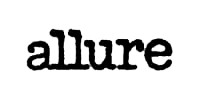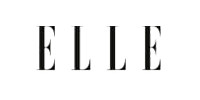Reverse The Signs Of Aging From Volume Loss

As Seen On












Revive your youthful appearance by smoothing smile lines and crow’s feet and restoring volume for lips and cheeks.

What are Facial Fillers?
Facial fillers are a type of injection used to improve the appearance of the face. There are many different types of facial fillers, and they can be used to correct a variety of problems, including wrinkles, hollow cheeks, and sunken eyes. Facial fillers can also be used to improve the appearance of the lips and the forehead.
Facial fillers are a popular alternative to surgery, and they can provide dramatic results with little downtime.
There are many different types of fillers available, and the best one for you will depend on the specific areas of your face that you want to address. The results of the treatment can last for several months or years.
Holiday Specials!
How Much Does Injectable Facial Fillers Cost?
Frequently Asked Questions
The FDA regulates dermal fillers (also known as injectable fillers). The effects of most FDA-approved dermal fillers are temporary because the body eventually breaks down and absorbs them. With this in mind, the injection procedure may have to be repeated to maintain the desired effect.
No. The FDA has not approved injectable silicone or any injectable fillers for body contouring or enhancement.
The FDA has also not approved needle-free devices for dermal filler injections and advises against using them to inject lip and facial fillers.
Please keep in mind that the FDA also recommends that you do not buy or use lip or facial fillers that are sold directly to public consumers.
At your consultation you will discuss your concerns and your dedicated medical professional will review your medical history to determine if you are a good candidate for Dermal Fillers. Just before treatment, we will clean the area and administer a topical anesthetic to numb the area. You will most likely not even feel a thing!
When you get a face filler treatment, it’s important to know what to expect in terms of results.
Good news! If you are like most people, you should see results immediately! This is because the filler will start to work immediately, plumping up your skin and smoothing out lines and wrinkles.
Yes, generally, most people see changes right away, but for a few other people, the full effects may not be visible for a few days.
The results of the face filler treatment will vary depending on the type of filler used and where it’s injected.
You will be able to resume normal activity right away, but you should refrain from exercise for at least 24 hours. There is a risk of side effects and the most common are bruising, redness, swelling, pain, tenderness, itching, and a rash.
There is no one-size-fits-all answer to the question of which is better, Botox or fillers. It depends on your needs and goals. Botox can be used to smooth out wrinkles and give you a more youthful appearance, while fillers can be used to add volume to the face and correct sunken areas. Both may also be used in tandem with each other in some cases.
When it comes to facial fillers, there are a lot of misconceptions. Some people think that only celebrities can get them, and that they’re dangerous or unnatural. The truth is, facial fillers are a great way to improve your appearance without surgery. They can erase wrinkles and add volume to your face, making you look younger and more vibrant.
Most facial fillers are made from natural materials like collagen or hyaluronic acid, so they’re safe and effective. And because they’re temporary, you can always stop using them if you don’t like the results. So if you’re considering getting facial fillers, don’t hesitate – they could be the best decision you ever make.
As we mentioned earlier, there are temporary and permanent fillers. Temporary fillers include collagen, hyaluronic acid, and poly-L-lactic acid. These are all dissolved naturally by the body over time. They are often used to smooth out wrinkles or add volume to the face.
Permanent fillers include silicone, polymethylmethacrylate (PMMA), and autologous fat. These substances are not dissolved by the body and can last for many years. They are often used to correct deep wrinkles or contour the face.
Which filler is best for you depends on your needs and preferences. Talk to your doctor about which filler is best for you.
- Swelling
- Redness
- Itching
- Bruising
- Pain
- Numbness
We can lift, lighten, fill, tighten, smooth, soften, and rejuvenate a patient’s aesthetic features with little to no recovery time involved.
Benefits of Facial Fillers?
As we age, our face naturally loses volume and appears more hollow. Facial fillers are FDA-approved gel-like substances that one of our highly trained medical staff will inject under your skin.
Facial fillers can provide a number of benefits, including:
- Cost effective: The cost of facial fillers varies depending on the type of filler that is used. However, they are generally less expensive than surgery.
- Quick and easy treatment: One of the benefits of facial fillers is that they can be administered quickly and easily in a doctor’s office. There is no need for surgery or extensive downtime, and most people experience little or no discomfort during the treatment.
- Natural look: There are many different types of fillers available, but most of them offer a natural look by mimicking the body’s own production of collagen. So whether you are getting fillers to plump up thin lips, smooth out wrinkles and crow’s feet, fill in hollow areas under the eyes, etc., you can rest assured that this will offer a natural look by simply replacing volume that has been lost over time or through injury.
- Long-lasting results: Another one of the benefits of facial fillers is that they are long-lasting. The effects can last for months or even years, depending on the type of filler used and the individual’s skin type. This means that patients can enjoy their more youthful appearance for a longer period of time.
- Safe and minimally invasive: Facial fillers are considered to be safe and minimally invasive. This is because they are typically made from a biocompatible material, such as hyaluronic acid, that is compatible with the human body. Additionally, facial fillers are often administered using a very small needle, which means that the procedure is minimally invasive.
After the procedure, depending on the treatment type, people that undergo the treatment observe the following:
- Smoother lines around the nose and mouth;
- Restored volume to temples or cheeks;
- Restored volume and fullness to the face;
- Reduced lip lines;
- Improved facial symmetry;
- Corrected acne scars on the face;
- Reductions in the appearance of wrinkles;
- Firmer, more youthful-looking skin;
- Increased confidence and self-esteem;
- An improved overall appearance and attractiveness, leading to an improved quality of life overall.
Types of Facial Fillers
There are many types of facial fillers on the market today. Some are temporary, while others are permanent. Temporary fillers usually last around 6 months, while permanent fillers can last up to 2 or more years. Temporary fillers include collagen, hyaluronic acid, and poly-L-lactic acid. Permanent fillers include silicone and Gore-Tex.
a. Collagen as a Facial Filler
Collagen injections are a common treatment for facial wrinkles. A collagen filler is a substance that is injected under the skin to fill in or plump up depressed areas. It is usually made from human or animal collagen. Collagen is a natural protein that helps to give skin its elasticity and strength.
b. Hyaluronic Acid as a Facial Filler
Hyaluronic acid (HA) is a glycosaminoglycan that is naturally found in the body. It is known for its ability to hold water, and as a result, can be used as a facial filler. HA can be used to fill in wrinkles and lines on the face, and can also be used to add volume to the cheeks and lips. It is a safe and natural way to improve the appearance of the face.
c. Poly-L-Lactic Acid as a Facial Filler
Poly-L-lactic acid is one of the most popular facial fillers on the market. It is a biodegradable and bioactive substance that is derived from lactic acid, which is produced by the body. It helps to reduce the appearance of wrinkles and lines on the face by restoring volume to the skin. Poly-L-lactic acid has been FDA approved for use in humans and is considered to be safe and effective. It can be used to fill deep wrinkles, nasolabial folds, and other areas of the face. Results are typically seen within a few weeks of treatment, and effects can last for up to two years.
d. Silicone as a Facial Filler
One permanent type of facial filler is injectable silicone. Silicone has been used for many years as a medical device, such as in breast implants. In recent years, it has also been used as a facial filler. Silicone is a synthetic material that is derived from sand and oil. It is biocompatible, meaning that it is often not harmful to the body, and it is non-allergenic.
e. Gore-Tex as a Facial Filler
Gore-Tex is known for its durability and ability to withstand pressure. This makes it an ideal material for filling in deep wrinkles and creases. It can also be used to add volume to the face, which can help to create a more youthful appearance.
How To Choose a Facial Filler
When you are considering getting a facial filler, it is important to talk to us so that we can help you choose the right one for you. There are many different types of fillers available, and each one has its own benefits and drawbacks. We can help you find the filler that will give you the best results with the least amount of risk.
How Are Facial Fillers Administered?
Facial fillers are administered by injecting them into the skin. This can be done with a needle or a cannula. A needle is a thin, sharp instrument that is used to inject the filler. A cannula is a blunt instrument that is used to insert the filler. It has a larger diameter than a needle, but is softer, which makes also less likely to cause damage to the skin.
The type of filler administration tool that is used will depend on the area being treated and the individual’s needs and preferences.

